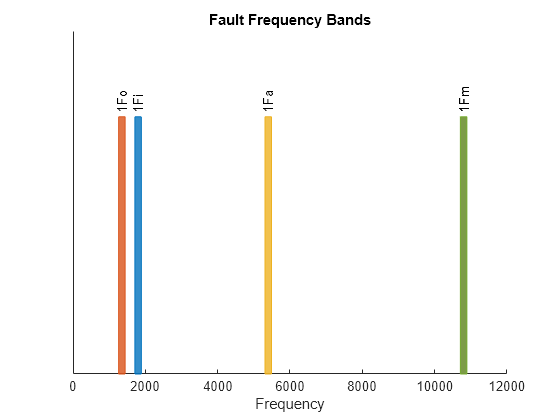gearMeshFaultBands
Construct frequency bands around the characteristic fault frequencies of meshing gears for spectral feature extraction
Syntax
Description
FB = gearMeshFaultBands(___,Name,Value)
Examples
Input Arguments
Name-Value Arguments
Output Arguments
Algorithms
gearMeshFaultBands computes the different characteristic fault
frequencies as follows:
Input shaft defect frequency,
Output shaft defect frequency,
Gear mesh defect frequency,
Assembly phase pass defect frequency,
References
[1] Lang, George Fox. “S&V geometry 101.” Sound and Vibration 33 (1999): 16-26.
Version History
Introduced in R2019b
